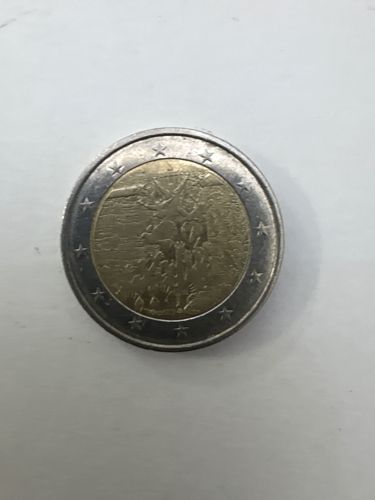2 Euro Coin (Common Side)
Country of Origin: Eurozone (various countries)
Year of Issue: 2002 (or later, based on common design)
Denomination: 2 Euros
Composition: Bi-metallic: outer ring of Copper-Nickel, inner part of Nickel-Brass and Nickel core

Brief Description
The obverse (common side) of the 2 Euro coin displays a geographical image of Europe. The design features a map of Europe with the 12 stars of the European Union around it. The value '2 EURO' is also prominently shown. The specific image provided shows the common reverse side of the Euro coins, which depicts a map of Europe, symbolizing the unity of the European Union, with the value '2 EURO' super-imposed. The twelve stars of the European flag are shown on the outer ring.
Historical Significance
The Euro was introduced as a physical currency on January 1, 2002, replacing the national currencies of the participating EU member states. The common design of these coins symbolizes the unified European economic and political project. The 2 Euro coin is one of the highest denominations in circulation, widely used across the Eurozone for daily transactions.
Estimated Value
Circulated 2 Euro coins are generally worth their face value (2 Euros). Collector's value can vary based on country of origin (national side), mint mark, year, and specific commemorative editions, ranging from 2 Euros to several hundreds or thousands for rare varieties or mint errors.
Care Instructions
Handle by the edges to avoid transferring oils from your skin, which can cause discoloration over time. Store in a cool, dry place, ideally in an inert album, coin holder, or slab specifically designed for coin storage to protect against environmental damage and physical scratches. Do not clean unless you are an expert, as improper cleaning can significantly decrease its value, especially for collector's items.
Created At: 2025-09-22T22:54:01.588711